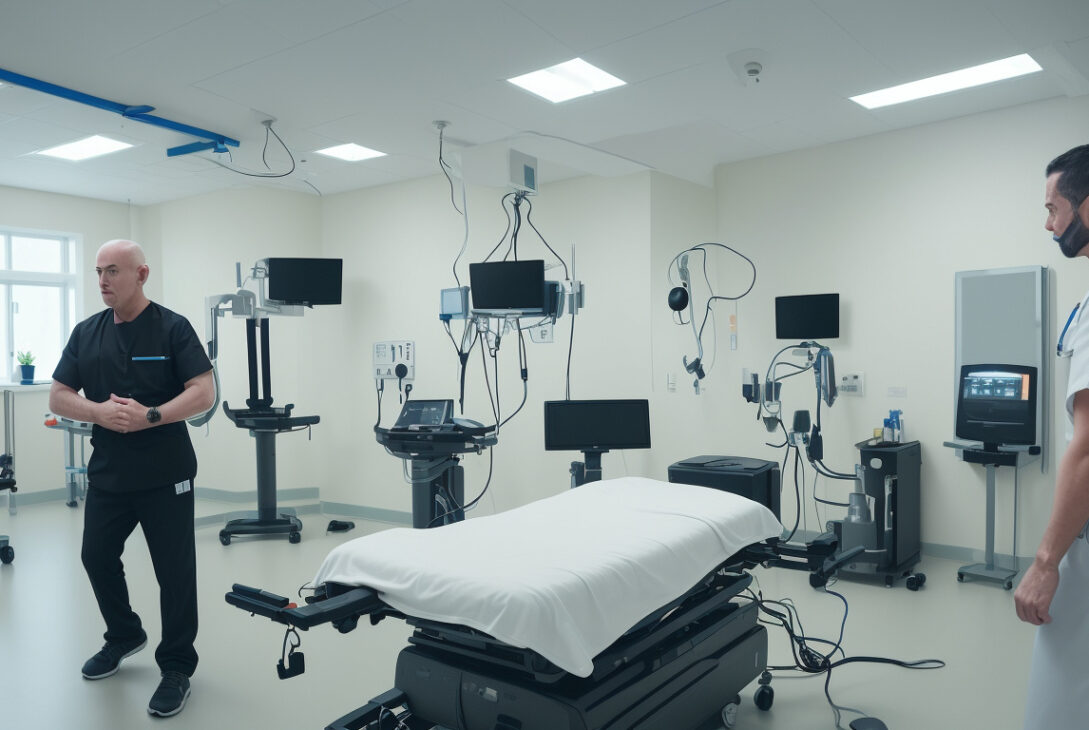New Technology Offers Hope for Stroke Survivors: Ohio Restaurateur’s Remarkable Recovery Story
By Kerry Breen, CBS News Editor — August 23, 2025
Tommy Fello, a 71-year-old restaurant owner from Ohio, experienced a terrifying health crisis on Christmas Eve that would change his life forever. After preparing a holiday buffet for his family and driving home late at night, Fello noticed his truck veering off the road. Initially attributing it to a flat tire, he managed to get home safely, only to realize it was himself who was unsteady. Within minutes, his wife and daughter called 911 as Fello struggled with severe symptoms of a stroke.
A Stroke That Changed Everything
At the hospital, Fello was diagnosed with an ischemic stroke. Though a clot-busting drug was administered, successfully reversing the stroke itself, he was left with debilitating numbness and paralysis on the entire left side of his body—including his arm, leg, and face. For months, physical and occupational therapy yielded only minor improvements, leaving him unable to return to the demanding work of running his restaurant.
Dr. Sharon Covey, Fello’s occupational therapist and founder of the Center for Stroke and Hand Recovery, described his condition when she first met him in January 2024: “His arm was stuck in a bent position, fingers curled, causing constant pain. Basic tasks like lifting his arm or picking up a cup were monumental challenges.”
Fello’s progress plateaued, a frustrating and painful reality for many stroke survivors. “You take for granted so many simple things,” Fello shared. “Every little accomplishment made me want to keep going, but I wondered if this was all I could expect.”
Breakthrough with the Vivistim System
Hope arrived unexpectedly when Fello learned about a groundbreaking medical device called the Vivistim System. Developed by MicroTransponder Inc. and approved by the FDA, the implant uses vagus nerve stimulation—a technique that sends gentle electrical pulses to one of the body’s longest cranial nerves—to enhance brain plasticity and improve motor function.
Unlike traditional rehabilitation alone, the Vivistim System is designed to boost neuroplasticity, which allows the brain to reorganize itself and forge new connections. During therapy sessions, clinicians send wireless signals to the implant to stimulate the vagus nerve while the patient performs rehabilitative tasks. Patients also engage in exercises at home to maximize recovery potential.
Dr. Erez Nossek, a neurosurgeon at NYU Langone, explains, “There’s no other FDA-approved technology that has been shown to create lasting new brain connections for stroke survivors. Vivistim represents a first-of-its-kind approach that is redefining what’s possible for patients with moderate to severe deficits.”
Surgery and Recovery at Cleveland Clinic
Fello was evaluated at the Cleveland Clinic by Dr. Mark Bain, a cerebrovascular neurosurgeon specializing in stroke recovery. After determining Fello was a candidate, Dr. Bain implanted the Vivistim device during a minimally invasive, hour-long procedure. A small incision was made near Fello’s neck to place the leads on the vagus nerve, and the implant itself was positioned beneath his collarbone.
“The surgery has a very low risk of complications—less than 1%,” Dr. Bain noted. Two weeks post-op, Fello’s device was activated, and he resumed intensive therapy under Dr. Covey’s guidance.
The results have been remarkable. Over four months, Fello’s pain and muscle tension have subsided, and he is now able to attempt using his left arm for tasks that were previously impossible. “He’s making huge strides,” Dr. Covey said. “Using his affected limb in daily activities is a game changer.”
For Fello, the transformation is deeply personal. “I’m thrilled with the progress and proud to have done it,” he said. “This device has given me back hope.”
Looking Toward the Future of Stroke Rehabilitation
With nearly 800,000 Americans experiencing ischemic strokes each year, advances like the Vivistim System offer new promise for those facing long-term disability. Dr. Bain predicts the next decade will usher in an explosion of innovative therapies and technologies aimed at stroke recovery.
“At present, this is one of the most effective strategies available to restore motor function in affected limbs,” said Dr. Covey. “We’ve been working off rehabilitation theories that are decades old. This technology could revolutionize how we approach stroke therapy.”
Since implanting the system in Fello, the Cleveland Clinic has treated several other patients successfully. MicroTransponder Inc. reports dozens of centers nationwide now offer the Vivistim device alongside paired therapy.
Tommy Fello’s journey from paralysis to renewed function stands as a testament to the potential of merging cutting-edge technology with traditional care. For stroke survivors and their families, the future indeed seems brighter than ever.
For more information on stroke recovery innovations, visit CBS News HealthWatch.
© 2025 CBS Interactive Inc. All Rights Reserved.










